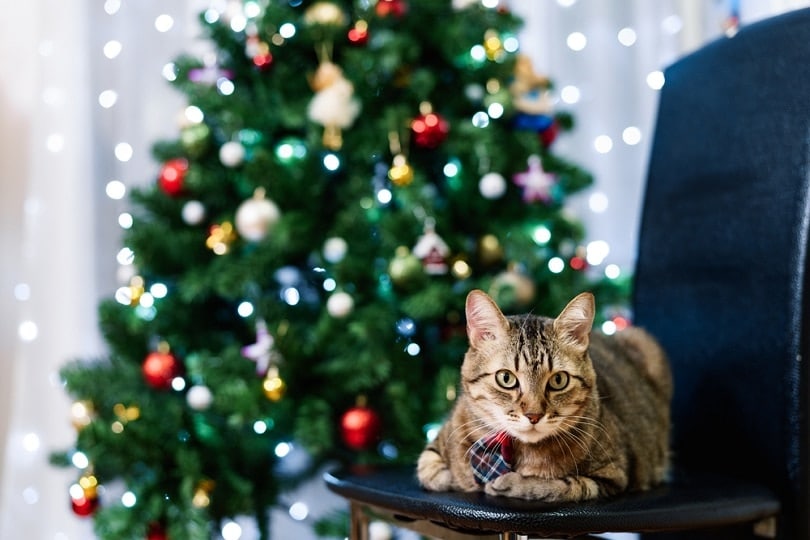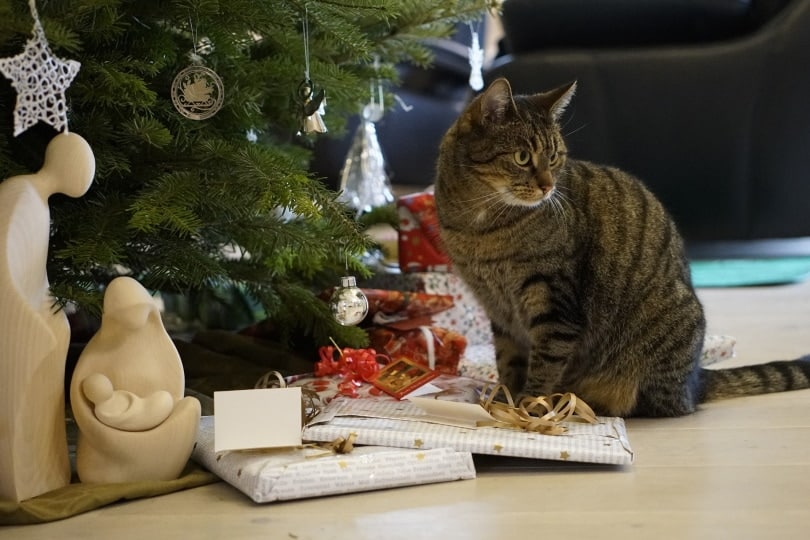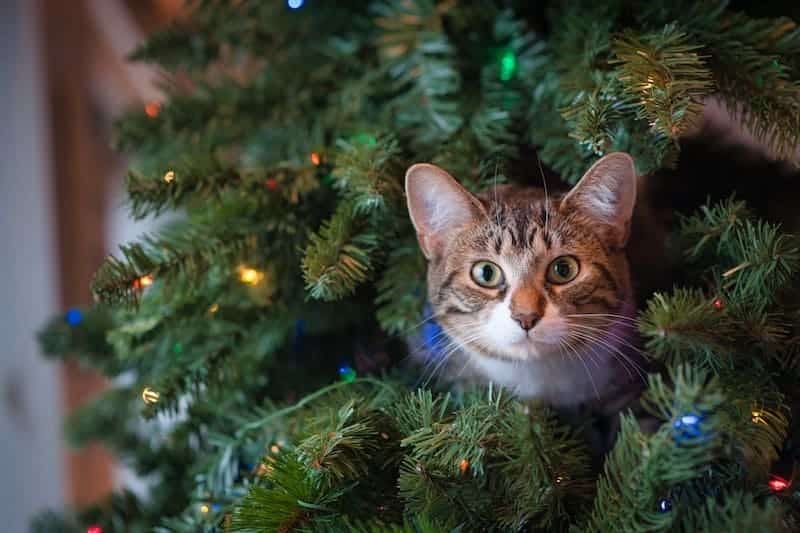Christmas is a time to decorate your home with decorations to get you in the holiday spirit. One such decoration that is found in most homes is, you guessed it, Christmas trees.
It’s fun to put up a tree, and it is often a holiday tradition, but it is also hard work. Having a feline running around in the home can be a challenge when having a Christmas tree. Cats seem to be attracted to them, so what can you do to stop a cat from climbing a Christmas tree?
Luckily, there are a few steps you can take to deter your cat from climbing into the tree and ruining all your hard work. In addition, a cat climbing a Christmas tree can be dangerous. In this guide, we’ll list six tips and tricks to help you enjoy your tree and keep your feline furball safe during the holidays.
The 6 Tips & Tricks to Stop a Cat From Climbing a Christmas Tree
1. Consider a Fake Tree
Many homes make it a family tradition to pick the best tree in the Christmas tree lot. However, if you have a cat that loves to attack your tree, you may want to consider buying a fake tree for your cat’s safety.
Pine needles can be harmful to your cat if ingested, and a fake tree takes that particular risk away. Pine needles can cause tummy upset, irritation to the mouth, and even obstruct or puncture the intestines, stomach, or esophagus.
2. Buy a Smaller Tree
Most cats love the opportunity to jump on a Christmas tree. Those shiny objects and blinking lights seem to call to a cat, and buying a smaller tree will help prevent your cat from being injured if the tree topples over.
Not to mention, a smaller tree is easier to decorate and keeps you from having to drag out the latter to decorate the top. A small tree may not work in all situations, especially if you have tall ceilings, but it’s worth considering for the safety of your cat.

3. Secure the Christmas Tree
If you have a cat that loves to jump on your tree, you may want to consider going the extra mile to secure the tree. Of course, you’ll need a tree stand, but you can also add more security by using plywood.
Place a square piece of plywood roughly the same size as your tree underneath the tree itself. Place the stand on top of the plywood and mark where the legs will rest. Drill holes for the legs and secure them with bolts.
You can also anchor the top of the tree to the wall using a wall anchor and fishing line, but be sure the fishing line is not in the line of fire in case your cat jumps on the tree so they don’t get tangled up.
4. Make the Tree Less Desirable
Cats detest certain smells and scents, and you can use this to your benefit, especially when it comes to making your tree less desirable to your kitty. We don’t recommend using commercial sprays, as these sprays may have harmful ingredients. Instead, you can make your own concoction.
Try using rosemary, vinegar, and lemon juice. It’s easy to make and can be quite effective when spraying the bottom of the tree. Some recommend using citrus sprays because cats hate the smell; however, do this carefully, as citrus is toxic to cats. When in doubt, consult your veterinarian on what to use for a safe and effective citrus spray.
5. Bust Out the Aluminum Foil
Cats hate the sound and feel of aluminum foil, making it an excellent resource to use. Simply wrap the base and tree trunk with the foil. In addition to foil, set up roadblocks for an extra measure, such as pine combs, baby gates, or even a cat-training mat around the base of the tree.
6. Move Your Furniture
The idea here is to make it harder for your cat to jump on the tree. Ensure you move any furniture away from the tree, such as a couch, chair, stool, bookcase, or any other object your cat can use to access the tree. If it’s too hard for your cat to jump on the tree, odds are he won’t try it or be less likely to succeed.

Other Important Safety Tips
- Avoid edible ornaments
- Use battery-operated lights instead of lights with cords, or use pre-cut cord tubing to keep the cords unexposed
- Unplug the tree when not supervised
- Cover the base of the tree with a skirt and presents to prevent your cat from drinking the water
- Do not use tinsel
- Do not place glass or breakable ornaments on the bottom branches

Conclusion
Having a Christmas tree doesn’t have to be a dreaded chore for cat owners. While we’ve mentioned steps you can take to keep your cat away from the tree, we also wanted to list important safety measures to keep your cat safe while your tree is up. Applying these few simple steps can go a long way, and they’ll also keep your cat from getting injured. If ever in doubt, consult your veterinarian for suggestions, especially if you plan to use a spray to deter your cat.
Featured Image Credit: Unsplash










